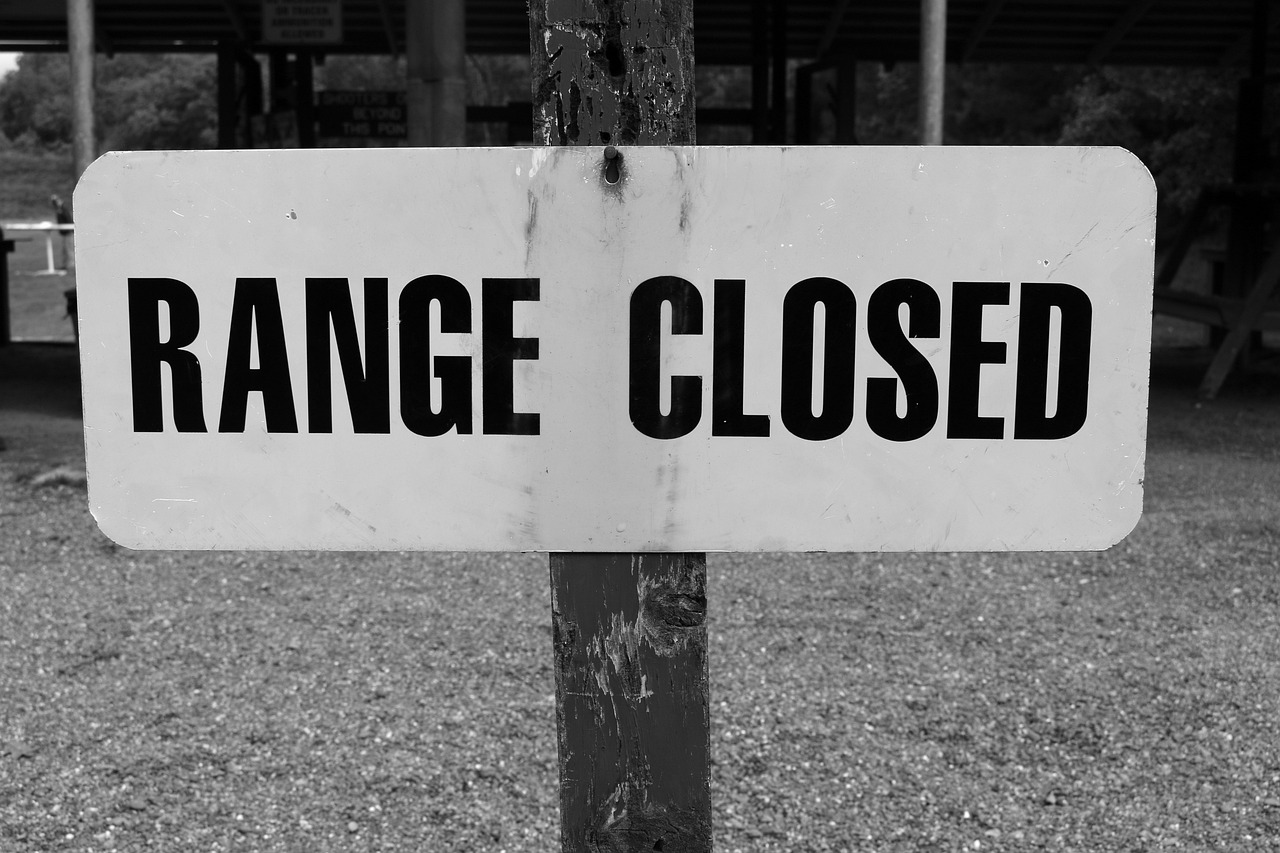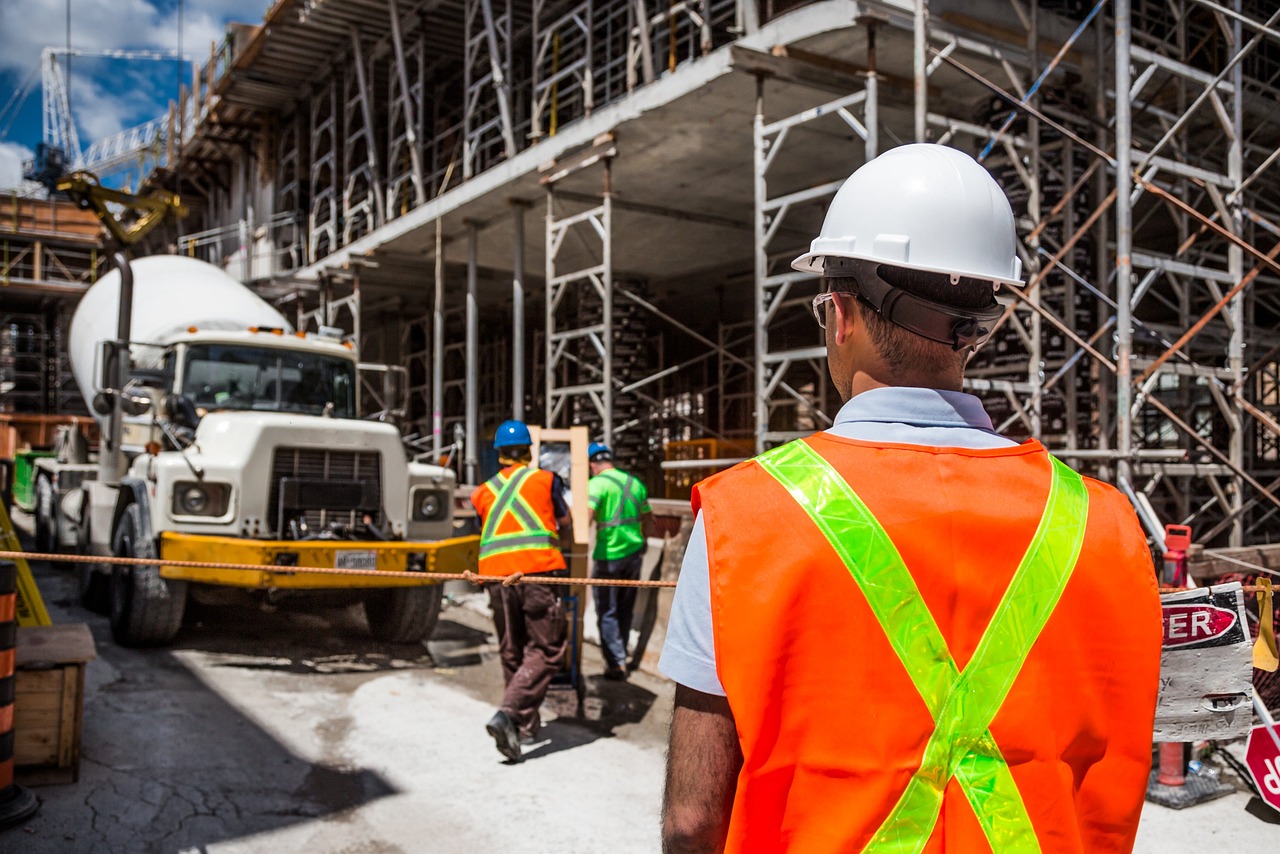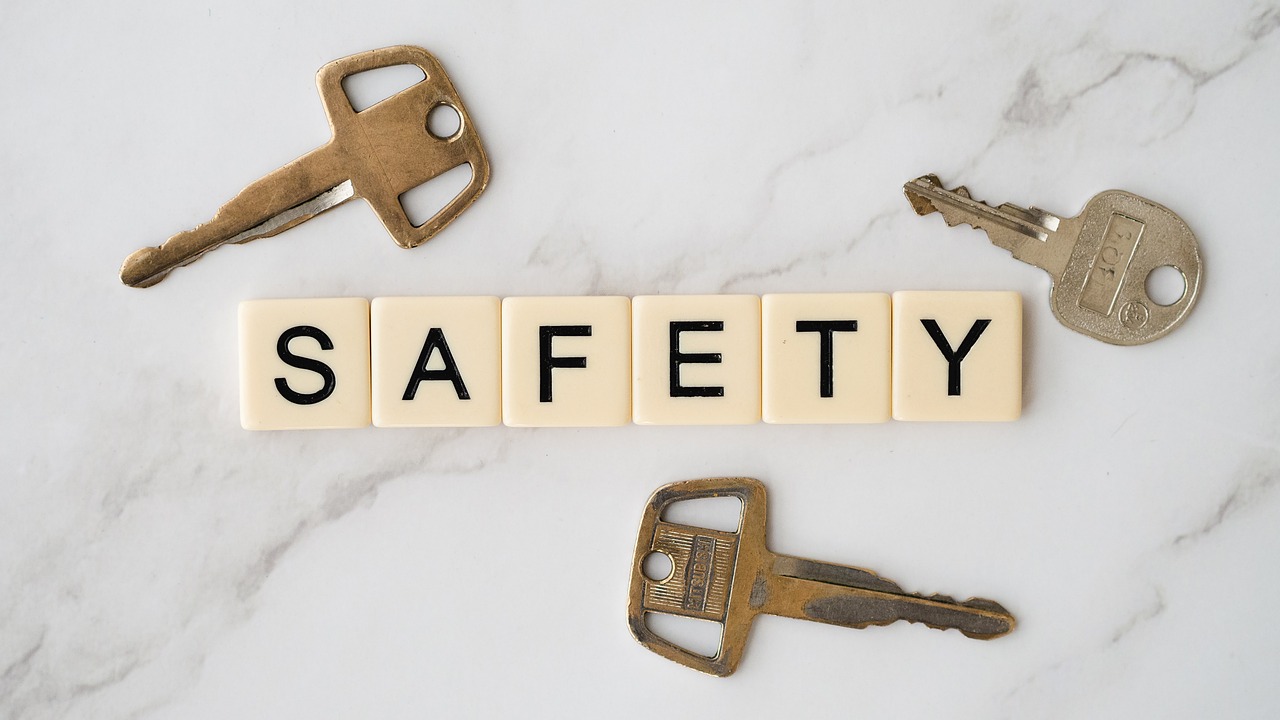An Interface of Safety and Human Behavior: What to Expect?
The relationship between safety measures and human behavior is not just a simple interaction; it's a complex dance that shapes our environments and experiences. Imagine walking into a bustling office or a crowded train station. What do you notice? The signs reminding people to wear masks, the hand sanitizers at every corner, and the emergency exits clearly marked. These safety protocols are designed to protect us, but how do they actually influence our behavior? And conversely, how does our behavior impact the effectiveness of these measures? This article dives deep into this intricate relationship, exploring how safety protocols and human behavior intertwine and what implications arise for various sectors, from workplaces to public spaces.
Understanding the significance of safety protocols is crucial for fostering a secure environment. Safety measures are not just bureaucratic red tape; they are essential components of our daily lives. In workplaces, they protect employees from potential hazards, ensuring that everyone goes home safe at the end of the day. In public spaces, they help mitigate risks, creating a sense of security that allows us to engage with our surroundings without fear. Think about it: when we feel safe, we are more likely to participate in community events, collaborate with colleagues, and even enjoy a night out. This sense of security is a direct result of effective safety protocols. But what happens when these measures are ignored or inadequately enforced? The consequences can be dire, leading to accidents, injuries, and a breakdown of trust within communities.
Now, let’s pivot to the role of human behavior in the context of safety. It’s fascinating to consider how our psychological makeup influences our adherence to safety measures. For instance, why do some individuals strictly follow safety protocols while others seem to dismiss them entirely? The answer lies in a myriad of psychological factors, including risk perception, fear, and even social influences. When individuals perceive a high level of risk, they are more likely to comply with safety measures. However, if they underestimate the risks, their behavior may reflect a false sense of security, which can lead to dangerous situations. Understanding these psychological processes is key to improving compliance and ultimately enhancing safety outcomes.
Risk perception significantly affects how individuals respond to safety protocols. When we assess risk, we often rely on our past experiences and the information available to us. For example, someone who has previously experienced a workplace accident may be more cautious and compliant with safety measures than someone who has never faced such a situation. This leads us to the critical question: how do we educate individuals about risks in a way that genuinely influences their decision-making? The answer lies in effective communication and education strategies that highlight the importance of safety protocols.
Various factors, including past experiences and social influences, shape our risk perception. For example, individuals who have been in a car accident may have a heightened awareness of road safety, while those who have never faced such an incident may not fully grasp the potential dangers. Additionally, social influences, such as peer pressure or cultural norms, can either encourage or discourage compliance with safety measures. Understanding these elements is essential for developing effective safety protocols that resonate with individuals on a personal level.
Understanding behavioral responses to perceived risks is crucial. When faced with a safety threat, individuals may react in various ways, from panic to compliance. Some might freeze, while others may take immediate action. It’s essential for organizations to recognize these common reactions and develop strategies to manage or alter them effectively. For instance, regular safety drills can help individuals practice their responses, reducing panic in real-life situations. This proactive approach not only enhances individual safety but also contributes to a culture of safety within organizations.
Effective training and education are vital for promoting safety awareness. Imagine a workplace where employees are not only aware of safety protocols but are also actively engaged in discussions about them. This engagement fosters a culture of safety that encourages individuals to take ownership of their well-being. Training programs should not only focus on the “how” of safety protocols but also delve into the “why.” When individuals understand the rationale behind safety measures, they are more likely to embrace them. Furthermore, ongoing education ensures that safety remains a priority, adapting to new challenges and technologies as they arise.
In today’s digital age, technology increasingly shapes safety practices. From smart devices to data analytics, technology offers innovative solutions that enhance safety protocols. But how does this integration influence human behavior? For instance, smart safety devices can provide real-time alerts and reminders, keeping safety top of mind. This technological support can lead to improved compliance, as individuals feel more empowered to take action in response to safety threats.
Smart safety devices enhance awareness and compliance. Wearable technology, such as smart helmets and safety vests equipped with sensors, can monitor environmental conditions and alert users to potential hazards. This real-time feedback not only helps individuals stay safe but also fosters a sense of accountability. When people know they are being monitored, they are more likely to adhere to safety protocols, creating a win-win situation for both individuals and organizations.
Data analytics can identify safety trends and behaviors. By analyzing data from various sources, organizations can gain insights into safety performance and identify areas for improvement. This proactive approach allows for the development of more effective safety protocols tailored to specific risks and behaviors. For example, if data reveals that certain safety measures are frequently ignored, organizations can investigate the underlying reasons and adapt their strategies accordingly. This continuous feedback loop not only enhances safety but also fosters a culture of improvement and accountability.
- What are safety protocols? Safety protocols are guidelines and measures designed to protect individuals from potential hazards in various environments.
- How does human behavior affect safety? Human behavior plays a crucial role in the effectiveness of safety protocols, influencing compliance and overall safety outcomes.
- Why is risk perception important? Risk perception affects how individuals respond to safety measures, impacting their decision-making and adherence to protocols.
- What role does technology play in safety? Technology enhances safety practices by providing real-time alerts, monitoring conditions, and analyzing data to improve safety protocols.

The Importance of Safety Protocols
Understanding the significance of safety protocols is crucial for fostering a secure environment in various settings. Whether it’s in workplaces, public spaces, or our daily lives, these measures serve as the backbone of our safety infrastructure. Imagine walking into a construction site without any safety gear or protocols in place; it would feel like stepping into a minefield! Safety protocols are designed to minimize risks and protect individuals from potential hazards, allowing us to carry out our activities with peace of mind.
In workplaces, safety protocols are not just legal requirements; they are essential for maintaining a healthy work culture. When employees feel safe, they are more likely to be productive and engaged. A safe work environment can lead to increased morale and reduced absenteeism, which ultimately benefits the organization as a whole. Moreover, adhering to safety protocols can significantly lower the chances of accidents and injuries, leading to fewer disruptions and financial losses. For instance, organizations that implement comprehensive safety training often see a marked decrease in workplace incidents.
In public spaces, safety protocols play a vital role in ensuring the well-being of the community. Think about how we rely on traffic signals and pedestrian crossings to navigate our cities safely. These protocols guide our behavior and help prevent accidents, making our daily commutes less stressful. Additionally, public health measures, like sanitation protocols during a pandemic, illustrate how safety guidelines can protect entire populations. By following these measures, individuals contribute to the collective safety of their communities.
Moreover, safety protocols are not static; they evolve based on new research, technology, and societal needs. For example, advancements in technology have led to the development of smart safety devices that enhance compliance and awareness. These innovations not only improve individual safety but also create a culture of vigilance and responsibility. Organizations that embrace such changes often find themselves at the forefront of safety excellence, setting benchmarks for others to follow.
In summary, the importance of safety protocols cannot be overstated. They are essential for protecting individuals and fostering a culture of safety in various environments. By understanding and adhering to these measures, we not only safeguard ourselves but also contribute to a safer society. So, the next time you encounter a safety protocol, whether it's wearing a helmet or following hygiene practices, remember that it’s not just a rule; it’s a commitment to your own safety and that of others around you.

Human Behavior in Safety Contexts
When we talk about safety, it's easy to think of hard hats, fire exits, and emergency protocols. But the truth is, the effectiveness of these safety measures heavily relies on human behavior. It's fascinating how our actions, decisions, and even our emotions can either bolster or undermine safety protocols. Imagine a fire drill: one person might take it seriously, while another might view it as just another interruption. This discrepancy in behavior can lead to significant variations in safety outcomes.
Understanding human behavior in safety contexts means diving deep into the psychology behind how people perceive risks and respond to safety measures. For instance, have you ever noticed how some people are more compliant with safety regulations than others? This phenomenon can often be attributed to their risk perception, which is influenced by a myriad of factors, including personal experiences, social pressures, and even cultural backgrounds. When individuals believe that a risk is high, they are more likely to adhere to safety protocols. Conversely, if they perceive a low risk, they might disregard these measures entirely.
Moreover, the context in which safety measures are applied plays a crucial role. In workplaces, for example, employees may feel compelled to follow safety protocols due to a strong organizational culture that prioritizes safety. However, in less regulated environments, such as public spaces, individuals may feel less inclined to comply. This brings us to the critical question: how can we bridge this gap in compliance? One potential solution lies in enhancing awareness through education and training.
To illustrate, let’s consider the factors that influence risk perception. It’s not just about the statistics; it’s also about the stories we tell ourselves. For example, if someone has had a negative experience with a safety issue in the past, their perception of risk will likely be heightened. Similarly, if their peers are dismissive of safety protocols, they may feel emboldened to ignore them as well. This creates a cycle where individual behaviors are shaped by both personal and social influences, leading to a collective attitude towards safety that can either uplift or undermine safety measures.
| Factor | Influence on Risk Perception |
|---|---|
| Past Experiences | Heightened awareness and compliance |
| Social Influences | Normalization of risky behaviors |
| Cultural Background | Varied attitudes towards safety |
Understanding these dynamics is essential for any organization or community aiming to enhance safety. By recognizing how human behavior influences safety compliance, we can tailor our training and communication strategies to address these psychological factors effectively. For instance, incorporating real-life stories and testimonials in safety training can make the risks feel more tangible and relatable, thereby increasing adherence to safety protocols.
Ultimately, safety is not just about rules and regulations; it’s about fostering a culture where individuals feel empowered to prioritize their safety and the safety of others. By addressing the underlying psychological factors that influence behavior, we can create environments where safety protocols are not just followed but embraced. So, the next time you think about safety, remember: it’s not just about the measures in place; it’s about the people who are expected to follow them.
- Why is human behavior important in safety contexts? Human behavior directly impacts the adherence to safety protocols, influencing overall safety outcomes.
- What factors influence risk perception? Factors include personal experiences, social influences, and cultural backgrounds.
- How can training improve safety compliance? Effective training can enhance awareness and understanding of risks, leading to better compliance with safety measures.

Risk Perception and Decision-Making
Risk perception is a fascinating psychological phenomenon that profoundly influences how individuals react to safety protocols. Imagine standing at the edge of a cliff, peering down at the rocky depths below. Your heart races, your palms sweat, and suddenly, every warning you've ever heard about safety seems to echo in your mind. This visceral reaction is a prime example of risk perception in action. It shapes our decisions and behaviors in ways we often don’t fully understand. When it comes to safety, how we perceive risk can determine whether we follow protocols or ignore them altogether.
At its core, risk perception involves a complex interplay of emotional and cognitive factors. People assess risks not just based on statistical data but also through personal experiences, societal influences, and even media portrayal. For instance, if someone has had a negative experience with a workplace accident, they may perceive that environment as inherently dangerous, leading them to adopt overly cautious behaviors. Conversely, if they have never encountered a problem, they might underestimate the risks, disregarding necessary safety measures.
Moreover, the decisions we make in response to perceived risks can have significant implications. When faced with a safety protocol, individuals might ask themselves questions like:
- Is this really necessary?
- What are the consequences of not following this protocol?
- How likely am I to encounter a problem if I don’t comply?
These questions highlight the cognitive processes behind decision-making in safety contexts. The answers can vary widely based on personal beliefs, past experiences, and even peer pressure. For example, in a workplace setting, if a majority of employees disregard a safety protocol, an individual may feel compelled to follow suit, even if they personally recognize the potential risks.
Another critical aspect of risk perception is the concept of availability heuristic. This cognitive bias occurs when people assess the probability of an event based on how easily examples come to mind. If a person frequently hears about accidents related to a specific activity, they may perceive that activity as more dangerous than it statistically is. This can lead to overly cautious behavior or, conversely, a false sense of security if they haven’t recently encountered any incidents.
In conclusion, understanding the intricacies of risk perception is essential for developing effective safety protocols. By addressing the psychological factors that influence how individuals perceive risks and make decisions, organizations can create more compelling safety messages and encourage compliance. It’s not just about enforcing rules; it’s about fostering a culture of safety where individuals feel empowered to make informed decisions based on a realistic understanding of risks.
- What is risk perception? Risk perception refers to how individuals interpret and evaluate the potential dangers associated with certain activities or situations.
- How does risk perception affect decision-making? Risk perception influences whether individuals choose to follow safety protocols or disregard them based on their assessment of potential risks.
- What factors influence risk perception? Factors include personal experiences, societal influences, media coverage, and cognitive biases like the availability heuristic.

Factors Influencing Risk Perception
Risk perception is a complex interplay of various factors that shape how individuals view potential dangers in their environment. It’s not just about the facts; it’s about how those facts resonate with our personal experiences, cultural backgrounds, and even our social circles. Imagine you’re standing at the edge of a cliff, looking down at the rocky terrain below. Your heart races, and your mind races even faster, weighing the dangers against the thrill of the view. This scenario illustrates how our personal experiences can greatly influence our perception of risk.
One of the primary factors influencing risk perception is past experiences. If someone has had a negative experience related to a specific risk, such as a car accident, they are likely to perceive driving as more dangerous than someone who has never been in an accident. This heightened awareness can lead to increased caution but can also result in unnecessary anxiety, affecting their decision-making process. Similarly, cultural background plays a significant role. Different cultures have varying norms and beliefs about safety, which can lead to divergent perceptions of risk. For instance, in some cultures, certain activities may be seen as adventurous and exciting, while in others, they might be viewed as reckless and dangerous.
Social influences also contribute significantly to how we perceive risk. The people around us, including family, friends, and colleagues, can shape our attitudes toward safety measures. If your friends frequently disregard safety protocols, you might be more inclined to follow suit, thinking, "If they’re not worried, why should I be?" Conversely, being surrounded by safety-conscious individuals can enhance your own risk awareness. This social dynamic highlights the importance of community in shaping our understanding of safety.
Another critical aspect of risk perception is media representation. The way risks are portrayed in the media can skew public perception. For example, extensive news coverage of plane crashes can lead individuals to perceive flying as more dangerous than it statistically is. This phenomenon is often referred to as the "availability heuristic," where people judge the probability of events based on how easily examples come to mind. When risks are sensationalized, it can lead to heightened fear and avoidance behaviors, which may not align with actual risk levels.
Additionally, cognitive biases play a role in how we assess risks. For instance, the optimism bias leads individuals to believe that they are less likely to experience negative events compared to others. This can result in a false sense of security, causing people to underestimate the importance of adhering to safety protocols. On the flip side, the negativity bias can cause individuals to focus disproportionately on potential dangers, leading to excessive caution and anxiety.
In summary, risk perception is influenced by an intricate web of factors, including past experiences, cultural background, social influences, media representation, and cognitive biases. Understanding these factors is essential for developing effective safety protocols and improving compliance. By addressing the psychological elements that shape our views on risk, we can create a more informed and safer society.
- What is risk perception? Risk perception refers to the subjective judgment people make about the characteristics and severity of a risk.
- How do past experiences influence risk perception? Past experiences can create a personal lens through which individuals view risks, often leading to heightened awareness or unnecessary anxiety.
- Why is cultural background important in risk perception? Cultural norms and beliefs can shape how individuals perceive and respond to risks, leading to varying attitudes toward safety measures.
- What role does media play in shaping risk perception? Media coverage can exaggerate certain risks, leading to skewed public perceptions and influencing behavior.

Behavioral Responses to Risk
When it comes to risk perception, how we react can be as varied as the colors in a sunset. Each individual's response to a perceived threat is influenced by a myriad of factors, including their past experiences, the context of the situation, and even cultural backgrounds. Imagine walking through a dark alley at night; one person might feel a surge of adrenaline and instinctively tighten their grip on their phone, while another might remain calm, relying on their knowledge of the area. This divergence in behavior illustrates the complex interplay between our perceptions of risk and our reactions to it.
In many cases, people exhibit a range of behavioral responses when faced with risk, and understanding these can help in crafting effective safety protocols. Here are some common reactions:
- Denial: Some individuals may downplay the seriousness of a risk, believing that it won't happen to them. This mindset can lead to a lack of adherence to safety measures.
- Panic: On the opposite end, others might react with panic, leading to hasty decisions that could exacerbate the situation. Think of a fire alarm going off; while some might evacuate calmly, others could freeze or rush without thinking.
- Overreaction: This can manifest as excessive caution or avoidance behaviors, where individuals go out of their way to prevent any perceived risk, sometimes to the point of disrupting their daily lives.
Interestingly, these behavioral responses can be managed or altered through effective communication and training. By educating individuals about the nature of risks and the importance of safety protocols, organizations can foster a culture of awareness and compliance. For instance, regular safety drills can not only prepare individuals for emergencies but also help them recognize how their behavior might change under pressure.
Moreover, the role of social influences cannot be understated. When people observe others taking risks or ignoring safety measures, they may feel compelled to follow suit. This phenomenon, often referred to as social proof, highlights the need for positive role models within safety practices. If a leader consistently follows safety protocols, their team is more likely to do the same.
In summary, understanding behavioral responses to risk is crucial for developing effective safety measures. By acknowledging the psychological factors at play and addressing them through education and positive reinforcement, we can create environments where safety is prioritized, and individuals feel empowered to act responsibly. This not only enhances compliance but also fosters a greater sense of community and shared responsibility for safety.
Q1: What are some common behavioral responses to risk?
A1: Common responses include denial, panic, and overreaction. Each person's reaction can vary based on their experiences and the context of the situation.
Q2: How can training help improve behavioral responses to risk?
A2: Effective training can educate individuals about risks and safety protocols, helping them understand the importance of compliance and reducing panic or denial during emergencies.
Q3: What role does social influence play in safety behavior?
A3: Social influence can significantly impact individual behavior; when people see others adhering to safety measures, they are more likely to follow suit, reinforcing a culture of safety.

Training and Education in Safety
When it comes to safety, training and education are not just optional add-ons; they are essential components that can make all the difference. Imagine walking into a workplace where everyone is equipped with the knowledge and skills to handle emergencies effectively. This scenario isn’t just a dream; it can be a reality through comprehensive safety training programs. These programs are designed to ensure that individuals understand the protocols in place and can respond appropriately in various situations, from minor incidents to major emergencies.
But why is this training so crucial? For starters, it empowers individuals. When employees or community members are educated about safety procedures, they are more likely to adhere to them. This adherence isn’t just about following rules; it’s about fostering a culture of safety where everyone feels responsible for their own safety and that of others. Think of it as a chain reaction: one informed individual can influence their peers, creating a ripple effect that enhances overall safety.
Moreover, effective training can significantly reduce the number of accidents and injuries. According to various studies, workplaces that implement regular safety training see a dramatic decrease in incidents. For example, a company that invests in safety training can lower its accident rate by as much as 30%. This not only protects employees but also saves organizations money on insurance and liability costs.
Training can take many forms, including hands-on workshops, online courses, and simulations. Each method has its advantages, and often, a combination of these approaches yields the best results. For instance, while online courses can provide theoretical knowledge, hands-on workshops allow individuals to practice skills in a controlled environment. This blend of learning styles caters to different preferences and ensures that the training resonates with a wider audience.
Furthermore, the role of continuous education cannot be overstated. Safety protocols are not static; they evolve as new technologies and practices emerge. Therefore, ongoing training ensures that individuals stay updated with the latest safety standards and practices. Organizations should consider implementing regular refresher courses to keep safety at the forefront of everyone’s mind.
To illustrate the importance of training in safety, consider the following table, which highlights key benefits:
| Benefit | Description |
|---|---|
| Increased Awareness | Individuals become more conscious of potential hazards and how to mitigate them. |
| Improved Response Times | Trained individuals can react swiftly and effectively during emergencies. |
| Enhanced Team Cohesion | Training fosters teamwork and communication, essential for effective safety management. |
| Reduced Liability | Organizations that invest in training can minimize legal risks associated with workplace accidents. |
In conclusion, investing in training and education around safety is not just a wise decision; it’s a necessary one. Whether in a workplace, school, or public space, the ripple effects of well-trained individuals can lead to a safer environment for everyone. So, the next time you think about safety, remember that knowledge is power, and education is the key to unlocking that power.
- What types of safety training are available? There are various types of safety training, including general safety awareness, specific equipment handling, emergency response, and first aid training.
- How often should safety training be conducted? It is recommended to conduct safety training at least annually, with refresher courses as needed, especially when new protocols or equipment are introduced.
- Can safety training be done online? Yes, many organizations offer online safety training courses, which can be a flexible option for employees.
- What are the signs of effective safety training? Effective safety training leads to increased compliance with safety protocols, reduced incident rates, and improved employee confidence in handling emergencies.

The Role of Technology in Safety
In today's fast-paced world, technology has become an integral part of enhancing safety across various sectors. From workplaces to public spaces, the integration of advanced technology into safety protocols is not just a trend; it's a necessity. Imagine a world where safety measures are not just reactive but also predictive, where potential hazards are identified before they become a problem. This is the promise that technology holds, and it’s reshaping how we think about safety.
One of the most significant advancements in safety technology is the development of smart safety devices. These devices, ranging from wearable tech to smart sensors, are designed to monitor environments and individuals in real-time. For example, consider a construction site equipped with wearable devices that alert workers when they are entering a hazardous zone. This proactive approach not only enhances individual safety but also fosters a culture of compliance and awareness among workers. The ability to receive immediate feedback allows individuals to make informed decisions, significantly reducing the likelihood of accidents.
Moreover, the role of data analytics in safety cannot be overstated. Organizations are increasingly utilizing data analytics to track safety trends and behaviors. By collecting and analyzing data, companies can identify patterns that lead to accidents and near misses. For instance, if data reveals that a particular type of machinery is frequently involved in incidents, targeted training and preventive measures can be implemented. This not only improves safety outcomes but also optimizes operational efficiency. Here’s a simple table to illustrate how data analytics can impact safety protocols:
| Data Type | Impact on Safety |
|---|---|
| Incident Reports | Identifies trends for targeted interventions |
| Employee Feedback | Enhances training programs based on real concerns |
| Environmental Sensors | Provides real-time alerts for hazardous conditions |
Additionally, the emergence of artificial intelligence (AI) in safety management is revolutionizing how organizations approach risk. AI systems can analyze vast amounts of data faster than any human, providing insights that can lead to improved safety protocols. For instance, machine learning algorithms can predict potential safety breaches based on historical data, enabling organizations to take preventive action before incidents occur. This not only saves lives but also reduces costs associated with workplace accidents.
However, while technology offers numerous benefits, it also presents challenges. One major concern is the human factor. As we increasingly rely on technology, there's a risk that individuals may become complacent, assuming that technology will always safeguard them. Therefore, it’s crucial to strike a balance between leveraging technology and maintaining a strong emphasis on human responsibility. Training and education must evolve alongside technological advancements to ensure that individuals understand how to interact with these tools effectively.
In conclusion, the role of technology in safety is multifaceted and continually evolving. From smart devices that enhance individual awareness to data analytics that drive organizational improvements, technology is reshaping our approach to safety. However, it’s essential to remember that technology should complement, not replace, the human element in safety protocols. As we move forward, embracing both technology and human behavior will be key to achieving optimal safety outcomes.
- How does technology improve workplace safety?
Technology enhances workplace safety through smart devices, real-time monitoring, and data analytics, helping to identify and mitigate risks before they lead to accidents. - What are smart safety devices?
Smart safety devices are advanced tools, such as wearables and sensors, that monitor environments and alert individuals to potential hazards, promoting proactive safety measures. - Can data analytics predict safety incidents?
Yes, data analytics can analyze historical data to identify patterns and trends, enabling organizations to predict and prevent potential safety incidents. - What is the importance of human behavior in technology-based safety?
Human behavior is crucial because technology should enhance awareness and compliance; without proper understanding and training, reliance on technology can lead to complacency.

Smart Safety Devices
In today's fast-paced world, have emerged as essential tools in enhancing safety protocols across various sectors. These innovative gadgets not only provide real-time data but also facilitate proactive measures to ensure safety. Imagine walking into a workplace where the air quality is monitored by a device that alerts you to harmful levels of toxins. That's the power of smart safety devices—they bridge the gap between technology and human safety.
One of the most significant advantages of smart safety devices is their ability to increase awareness. For instance, wearable technology, such as smart helmets or vests equipped with sensors, can monitor vital signs and environmental conditions. If a worker is exposed to high temperatures or hazardous materials, these devices can issue immediate alerts, allowing for quick action to be taken. This not only protects the individual but also fosters a culture of safety within the organization.
Moreover, the integration of Internet of Things (IoT) technology into safety devices has revolutionized how we approach safety management. With IoT, devices can communicate with each other and share critical data. For example, a smart smoke detector can notify fire alarms and emergency services simultaneously, ensuring a swift response to potential dangers. This level of connectivity is crucial in minimizing response times and ultimately saving lives.
To illustrate the impact of smart safety devices, consider the following table that outlines various types of devices and their functionalities:
| Device Type | Functionality | Sector Utilized |
|---|---|---|
| Wearable Sensors | Monitor health metrics and environmental conditions | Construction, Manufacturing |
| Smart Smoke Detectors | Detect smoke and carbon monoxide; alert emergency services | Residential, Commercial |
| Automated External Defibrillators (AEDs) | Provide immediate assistance in cardiac emergencies | Public Spaces, Workplaces |
| Surveillance Cameras | Monitor premises for security threats | Retail, Corporate |
As we delve deeper into the role of technology in safety, it becomes evident that these devices not only enhance compliance but also empower individuals to take charge of their safety. For example, when employees are equipped with smart devices that track their movements and alert them to potential hazards, they are more likely to adhere to safety protocols. This shift towards a more proactive approach to safety can significantly reduce workplace accidents and enhance overall productivity.
In conclusion, smart safety devices represent a fascinating intersection of technology and human behavior. By leveraging these innovations, organizations can create safer environments that not only protect their workforce but also encourage a culture of safety awareness. As we continue to embrace technological advancements, the potential for smart safety devices to transform safety practices is boundless. It's a thrilling time to witness how these devices are shaping the future of safety in our daily lives.
- What are smart safety devices? Smart safety devices are technologically advanced tools designed to enhance safety by monitoring conditions and providing real-time alerts.
- How do wearable safety devices work? Wearable safety devices monitor vital signs and environmental conditions, alerting users to potential hazards.
- Can smart safety devices improve workplace safety? Yes, by increasing awareness and facilitating quicker responses to emergencies, smart safety devices can significantly enhance workplace safety.
- Are smart safety devices expensive? While initial costs may be higher, the long-term benefits and potential to prevent accidents often outweigh the investment.

Data Analytics and Safety Improvement
In today's fast-paced world, the integration of data analytics into safety protocols has become more than just a trend; it's a necessity. Imagine a scenario where a workplace can predict potential safety hazards before they even occur. This is the power of data analytics. By harnessing vast amounts of data collected from various sources, organizations can identify patterns and trends that may not be immediately visible. For instance, analyzing incident reports, employee feedback, and environmental conditions can reveal underlying issues that contribute to safety risks.
Moreover, data analytics enables organizations to shift from a reactive to a proactive approach in safety management. Instead of merely responding to accidents after they happen, companies can use predictive analytics to foresee potential risks. This can lead to the implementation of preventative measures that significantly reduce the likelihood of incidents. For example, a manufacturing plant might analyze machine usage patterns and discover that certain machines are more prone to malfunction during specific shifts. By addressing these shifts with targeted training or maintenance schedules, they can enhance overall safety.
To illustrate the impact of data analytics on safety improvement, consider the following table:
| Data Source | Insights Gained | Action Taken |
|---|---|---|
| Incident Reports | Common causes of accidents | Enhanced training programs |
| Employee Surveys | Perceived safety concerns | Addressed through management meetings |
| Environmental Monitoring | Hazardous conditions | Improved ventilation systems |
This table highlights how different data sources can lead to actionable insights, ultimately improving safety protocols. However, it's important to note that data analytics isn't just about collecting data; it's about interpreting it effectively. Organizations need to foster a culture where data-driven decision-making is valued. This involves training staff not only to understand the data but also to appreciate its relevance to their daily operations.
Furthermore, the role of technology cannot be overstated. With advancements in machine learning and artificial intelligence, organizations can automate the analysis of safety data, allowing for quicker responses to emerging risks. For example, smart safety devices equipped with sensors can provide real-time data on environmental conditions, alerting personnel to potential hazards before they escalate. This seamless integration of technology and data analytics creates a dynamic safety environment where continuous improvement is not just a goal; it's a reality.
In conclusion, data analytics is revolutionizing the way organizations approach safety. By leveraging data to anticipate risks and enhance safety protocols, businesses can create a safer working environment for everyone. As we continue to embrace the digital age, the importance of data in shaping safety practices will only grow, making it imperative for organizations to invest in both technology and training to stay ahead of the curve.
- What is data analytics in safety improvement? Data analytics in safety improvement involves collecting and analyzing data to identify patterns and trends that can help prevent safety incidents.
- How can organizations implement data analytics? Organizations can implement data analytics by investing in technology, training staff, and establishing protocols for data collection and analysis.
- What are some benefits of using data analytics for safety? Benefits include proactive risk management, enhanced training programs, and improved decision-making based on real-time data.
Frequently Asked Questions
- What are safety protocols and why are they important?
Safety protocols are established procedures designed to protect individuals and ensure a secure environment. They are crucial in various settings, such as workplaces and public spaces, as they help prevent accidents, reduce risks, and promote overall well-being. By adhering to these protocols, we not only safeguard ourselves but also contribute to a culture of safety that benefits everyone.
- How does human behavior affect safety measures?
Human behavior is a key factor in the effectiveness of safety measures. If individuals perceive safety protocols as unnecessary or overly complicated, they may be less likely to follow them. Factors such as past experiences, social influences, and individual attitudes play a significant role in shaping how people respond to safety guidelines. Understanding these behaviors can help organizations tailor their safety programs to be more effective.
- What is risk perception and how does it influence decision-making?
Risk perception refers to how individuals assess and interpret potential hazards. It significantly influences decision-making, especially in safety-related situations. For instance, someone who perceives a high risk of injury may take extra precautions, while another who feels safe might disregard safety measures. This psychological process can lead to varying compliance levels with safety protocols, making it essential for organizations to address these perceptions.
- What factors influence risk perception?
Several factors shape an individual's risk perception, including personal experiences, cultural background, and social influences. For example, someone who has experienced a workplace accident may be more vigilant about safety protocols than someone who hasn't. Additionally, the opinions of peers and societal norms can also sway how individuals view risks, impacting their adherence to safety measures.
- How can training and education improve safety awareness?
Training and education are vital for enhancing safety awareness. By providing individuals with the knowledge and skills necessary to understand and implement safety protocols, organizations can foster a more compliant and safety-conscious culture. Effective training programs can also address misconceptions and teach individuals how to respond appropriately in various situations, ultimately leading to better safety outcomes.
- What role does technology play in enhancing safety?
Technology plays a transformative role in improving safety practices. Innovations such as smart safety devices and data analytics allow for real-time monitoring and analysis of safety protocols. These advancements not only enhance awareness but also facilitate compliance by making safety measures more accessible and user-friendly. Ultimately, technology helps bridge the gap between human behavior and safety requirements.
- How do smart safety devices influence human behavior?
Smart safety devices, like wearable technology, can significantly influence human behavior by providing real-time alerts and reminders about safety protocols. For instance, a wearable device that monitors heart rates can alert users to take breaks, reducing the risk of fatigue-related accidents. By integrating these technologies into daily routines, individuals are more likely to adhere to safety measures and make informed decisions.
- How can data analytics improve safety protocols?
Data analytics can identify trends and behaviors related to safety, allowing organizations to refine their protocols. By analyzing data from incidents, compliance rates, and employee feedback, organizations can pinpoint areas for improvement and develop targeted strategies to enhance safety measures. This proactive approach not only helps prevent accidents but also fosters a culture of continuous improvement in safety practices.



















